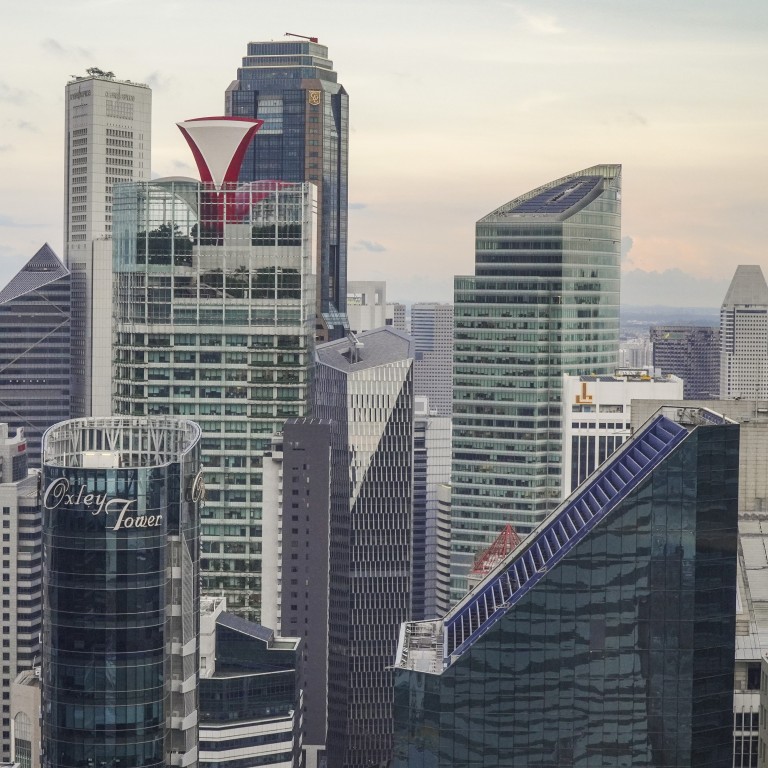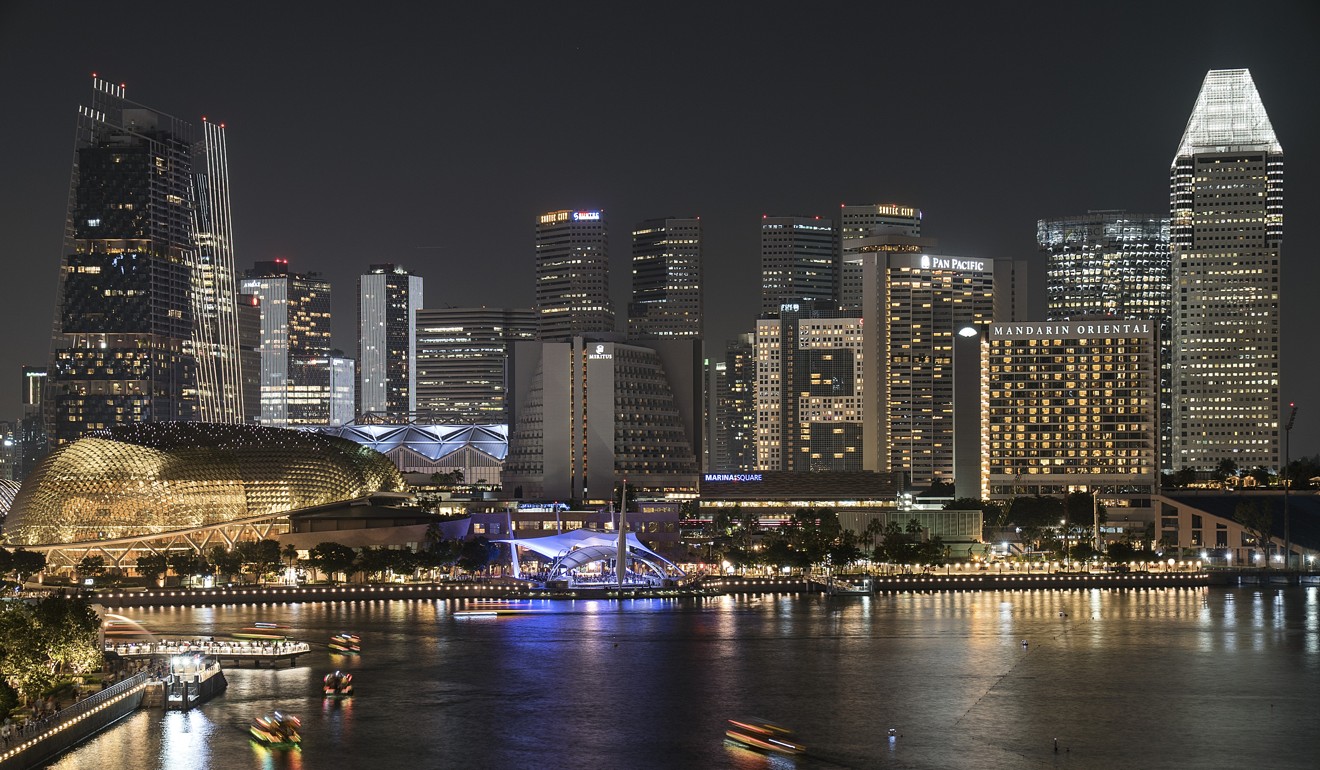
Singapore revises growth upwards, but ‘global trade tensions’ could threaten recovery
- Singapore’s GDP grew by 2.1 per cent in the third quarter, while full-year growth is forecast at between 0.5 and 1 per cent
- But analysts say the US-China trade war could hurt the Singapore economy, although it will gain from the Hong Kong protests
Singapore’s gross domestic product grew by 2.1 per cent in the July to September period compared to the second quarter of this year, after adjustments for seasonal swings, according to the Ministry of Trade and Industry (MTI).
This expansion was up from the 0.6 per cent third quarter estimate reported from preliminary data in October, which meant the trade-reliant city state had comfortably skirted a technical recession.
Thursday’s results came on the back of better-than-expected performances from the manufacturing and construction sectors.

The manufacturing sector recorded growth of 7.6 per cent, a turnaround from the 4.2 per cent decrease in the second quarter, while contraction in the construction industry eased from 5.5 per cent last quarter to 0.1 per cent.
This easing could be attributed to both private and public sector projects in the past quarter, said Song Seng Wun, an economist at CIMB Private Banking.
“Private sector construction had much to do with the en bloc sales that peaked last year. We have seen construction activities such as demolishing and rebuilding works taking place,” he said.
A total of 35 en bloc residential deals were hammered out last year, valued at more than S$10 billion (US$7.3 billion) – the highest in more than a decade.
Song was confident the construction industry will see continued expansion as such projects continue.
Public sector projects, such as the ongoing construction of a new terminal at Singapore’s Changi Airport, as well as the expansion of its train networks, also boosted numbers.

Lee Ju Ye, an economist at Maybank Kim Eng Research, said a global surge in smartphone demand, particularly from Samsung and Apple, contributed to increased semiconductor production and an increase in manufacturing activity.
“Going into 2020, for Asean, a lot of the countries around the region are rolling out 5G, including Singapore, the Philippines, and Malaysia,” she said. “That could help spike some demand as well.”
Singapore’s exports fell for the eighth month in a row in October
Singapore’s trade ministry also narrowed its full-year growth forecast to 0.5 to 1 per cent from the initial 0 to 1 per cent range, which was downgraded by the central bank in August.
“For 2020, global growth is projected to see a modest pickup, led by an improvement in the growth outlook for emerging market and developing economies,” the trade ministry said.
It projected the economy to expand by 0.5 to 2.5 per cent next year.
Lee said Thursday’s statement showed the MTI was “cautious” about growth in 2020.
“Their forecast for 2020 is 0.5 to 2.5 per cent. If you compared this with when they were forecasting for 2019 at the same time last year, it was 1.5 to 3.5 per cent,” she said.
Even though Thursday’s results provided positive signs of recovery, analysts said they would rather be “cautiously optimistic”.
Global hiccups can upend Singapore’s economic performance in the past quarters, said Song.
If Singapore is so wealthy, why do its citizens feel stuck?
Selena Ling, head of treasury research and strategy at OCBC Bank, stressed that headwinds remain amid “renewed worries” about the progress and actual signing of a US-China trade deal.
“It is still too early to break out the champagne yet,” Ling said.

Lee was bullish that a recovery in the Singapore economy was “under way” but it is going to be a “sluggish” one. She said the city state was likely to see a boost from the diversion of both leisure and business travellers from Hong Kong.
Lee warned, however, that Singapore’s economy would be hurt if a trade deal between the US and China does not materialise.

